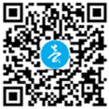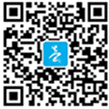11月28日午后,贺建奎如期出现在第二届人类基因组编辑国际峰会现场。一开始场下有些骚乱,贺建奎略显紧张。演讲开始后,他首先感谢了所在大学以及其他人,不过此刻场下有人打断了他的发言。
停顿5秒钟后,他首先讲到为何选择CCR5这个靶点,从动物模型到人类胚胎,验证了基因编辑技术的安全性,并通过全基因组测序等方式验证基因编辑婴儿——露露和娜娜,是否存在脱靶。
问答环节,主持人问了大部分专家都会提出的一个问题,为何会选择CCR5,这个对人体有其他功能的靶点。贺建奎表示,他觉得这个基因比较好研究,基本的功能被了解,比较好进行基因编辑,但深入的功能了解需要进一步研究。
最后大会主席、诺奖得主大卫·巴尔的摩进行简短的表达,“我并不认为需要进行这样操作的必要。这项临床试验由于缺乏透明度,破坏了科研群体的规则,并不会被同行认可。”
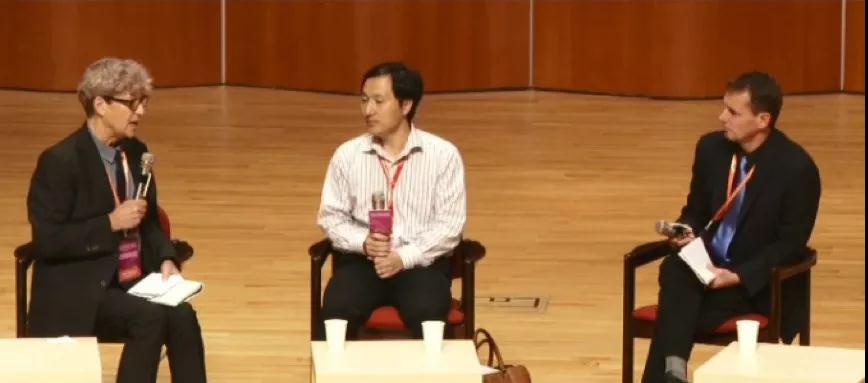
贺建奎现场与嘉宾互动
北京大学教授魏文胜提问,禁止编辑人类胚胎不仅是国际共识,也是中国科研群体的共识,为何还会秘密从事这样试验。贺建奎的回复比较含糊,他说三年前他在不同会议场合问临床和伦理专家,也许可以尝试从事基因编辑的临床试验,于是他就(私下)做了这样试验。
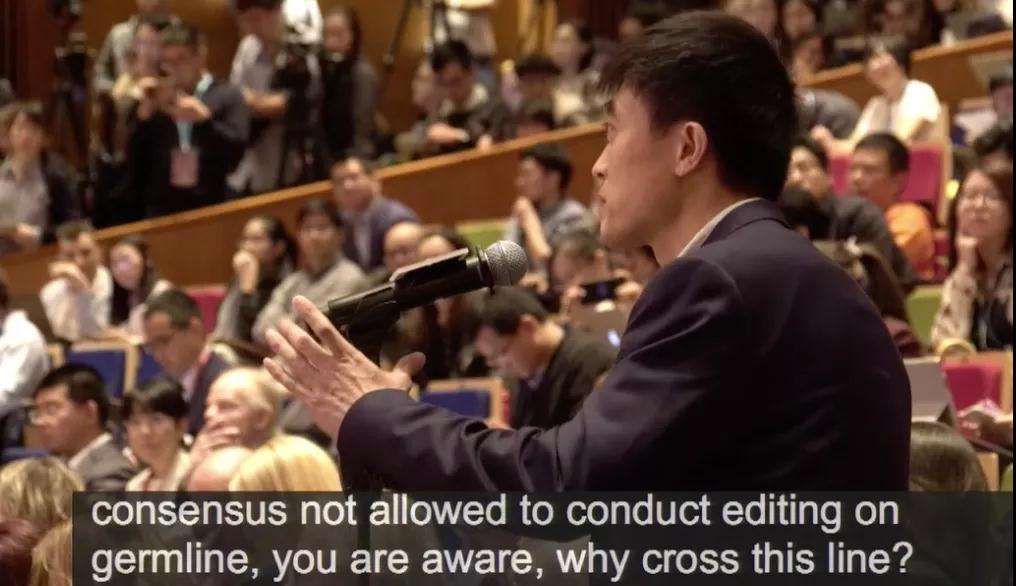
北京大学教授魏文胜提问:为什么越过红线?
最后一个提问:如果是你的孩子呢?贺建奎说,如果是我的孩子,我会第一个尝试。
基因编辑婴儿出现后
这两天的舆论让贺建奎的名字突破了人才辈出的生命科学领域,成功迈向普通公众,被更为广泛的人群所熟知——贺建奎声称利用基因编辑技术“造出”两个基因修饰婴儿的事件一下子引燃舆论,质疑、恐惧、激烈批评纷至沓来。
笔者曾与贺建奎接触数次。他出生于湖南娄底普通的家庭,2002年高中毕业考入中国科学技术大学,之后留学美国,获得莱斯大学生物物理学博士学位,并在美国斯坦福大学进行博士后训练,通过自己的努力,在学术和工业界小有成就。
但他似乎并不满足于此。
后来随着与贺建奎接触的深入,笔者发现,他其实是一名舆论运作高手。他的研究一直与生物物理、基因测序有关,基因编辑领域的专家并不认为他属于这个领域。但通过基因编辑婴儿事件,他一举成为全球这个领域“炙手可热”的大人物,也成为了被议论最多的一位学者。
半路出家的贺建奎
在贺建奎的南方科技大学个人主页上对此次项目有介绍,《HIV 免疫基因 CCR5 胚胎基因编辑安全性和有效性评估》。研究目的里说,本试验在细胞系、动物实验和人类废弃胚胎的基础上,招募罹患不孕不症的 HIV 阳性患者,通过充分的知情同意告知志愿者风险及获益,通过一对一面谈,签署知情同意书;同时提交合作医院伦理委员会讨论并通过实验设计。
经《知识分子》查证,贺建奎以前没有发表过任何在动物中进行胚胎编辑的论文。唯一能查到的相关论文是2011年发表在Phys. Rev. Lett.上的一篇理论性质的文章。这篇文章的摘要写道:“本文中我们研究CRISPR在选择压力下的间隔序列的多样性。我们提出了一种种群动力学模型,该模型解释了生物学观察结果,即CRISPR的前端-近端区域更加多样化,而CRISPR的前导-远端区域更加保守。该结果显示与最近的实验一致。”
这是他截止目前唯一一篇与基因编辑工具CRISPR有关的文章,也是他转向生物学的第一篇论文。后来基本是些测序的文章,绝大部分发表在Sci Rep和Plos One这两本刊物上。
而2011年发表这篇论文的时候,他的工作机构是美国莱斯大学物理和天文系,这篇文章的合作者是该校生物物理系以及物理和天文系的Michael W. Deem。
据美联社的报道,Michael Deem也是贺建奎博士期间的导师,曾在莱斯大学与贺建奎合作疫苗研究,认为基因编辑与疫苗类似,并担任贺建奎两家公司的科学顾问。
对于此次事件,莱斯大学发表声明称,莱斯大学在此前对该项研究毫不知情,并表示“不管在何处进行,该项目都违反了科学研究的准则,并且不符合科研界与莱斯大学的伦理道德要求”。莱斯大学已经启动了对Michael Deem博士与这项研究的关系的调查。
公开简历显示,贺建奎于2006年获得中国科学技术大学近代物理学学士学位,后赴美国莱斯大学攻读生物物理学博士学位。2011年开始,贺建奎在美国斯坦福大学攻读博士后,2012年结束后回到深圳。
而项目书中所说的,“在细胞系、 动物实验和人类废弃胚胎的基础上”,最多可理解为在别人研究的基础上,自己并没有做过这方面的研究,或者这是他第一次做了这么多的试验。
为何也选择在周一见
11月26日是一个看似普通的工作日。不过第二天,第二届人类基因组编辑国际峰会将在香港大学召开,该峰会汇聚了基因编辑领域的顶尖学者以及伦理学家,与会的专家不仅会讨论基因编辑最新发展动向,也会探讨基因编辑伦理,它们都是大会的核心议题。一开始,这个会除了基因编辑领域的人外鲜有人关注,包括科学类媒体,更不用说大众媒体了。
但当天11点左右,微信群开始有人转载来自华盛顿邮报和MIT technology Review有关基因编辑婴儿的报道,然后人民网的报道也出来了。
这个事件立刻在各媒体和社交平台上“爆炸”了。
第二届人类基因组编辑国际峰会自然也成为了大家关注的焦点。不仅因为它将广泛地探讨基因编辑方面的话题,更为重要的是,贺建奎是此次大会的演讲嘉宾,可能会在大会上公布基因编辑婴儿的相关细节。
11月26日,贺建奎及其同事选择在大会前一天曝光,有可能是经过精心策划的。他导演并推动了这场舆论风暴,先是通过人民网和海外媒体曝光他“造出”基因编辑婴儿的事实,然后通过视频把基因编辑婴儿如何诞生叙述了一遍。从科学圈到普通公众,从国内到国外,关注的目光像一把火一样燃烧并蔓延开来。
来自学术界的科学家以及相关机构,与此次事件有关的单位,如深圳卫计委、南方科技大学,在第一时间对此事件进行强烈批评。包括他自己的公司——瀚海基因也予以澄清,称是其个人行为,与公司无关。此后,中国卫健委、人民日报也关注到了这个话题,予以谴责;例如美国科学促进会,美国科学院、工程院以及医学院等国外机构都对此事件发表意见。
此次事件引起了外界强烈关注,贺建奎也早有准备,他有一个媒体团队不时向外界释放一些信息。尽管如此,这些有限的信息远远不能回答公众的疑问。
精心策划的舆情调查
今年7月中旬,贺建奎给笔者发来一篇新华社报道,关于英国纳菲尔德生物伦理学协会公布的一份报告。该报告认为,基因编辑技术修改人体胚胎是可被“伦理接受的”,但需要在非常严苛的条件下进行。贺建奎跟笔者说,“英国人观念果然超前。我认为基因编辑用于提升人类健康是可以接受的,但是用于把后代变高变帅是不合伦理的。”他也把这段话发在他自己的朋友圈。
由于当时笔者在走路,所以只是简单回应了几句,也没有否定他的观点。没有想到,他可能已经有了一个更大的计划:设计婴儿。这份报告,无疑增强了他的信心,支持他进行人类胚胎的基因修饰工作。
果然,数月后,他与合作者一起做了一份小范围传播的社会调查。
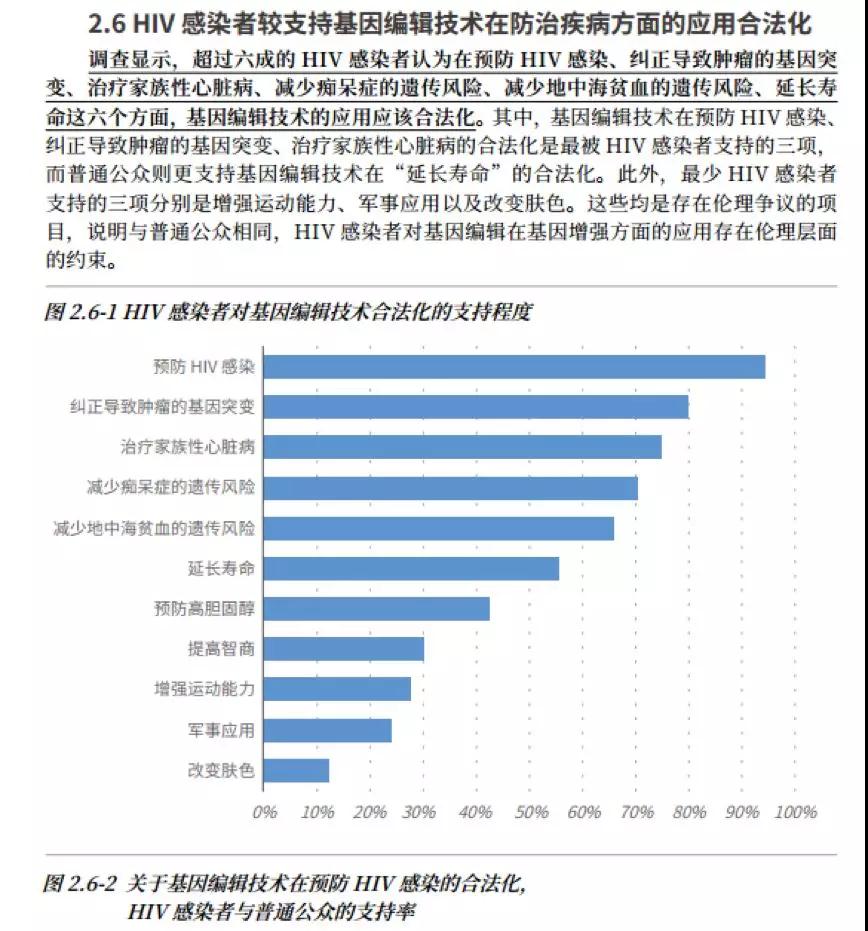
中山大学学者发起的《中国公众对基因编辑技术的认知与态度研究报告》
11月9日,由中山大学学者发起的《中国公众对基因编辑技术的认知与态度研究报告》的通俗版本在各大新闻平台传播,当时也引起了一波小范围的讨论,发起者主要想了解公众对基因编辑的态度。
贺建奎也在第一时间,将相关新闻报道链接发至笔者的微信,并表示“这份报告很重要”。
后来笔者通过其他渠道收到了完整版的调查报告,发现调查者的目的很有针对性,并且设计了很多非常专业以及敏感的问题,例如基因编辑技术能否修饰胚胎、能否改变肤色、能否矫正遗传缺陷等。调查发现,相比普通公众,HIV感染者对基因编辑技术的了解与知识掌握更为薄弱,而且对基因编辑技术相关信息的需求比普通公众更高、更迫切。他们也更认为,基因编辑技术在防治疾病方面的应用应该被合法化,基因编辑技术的应用最应该由科学家来决定。
如今回想起来,这应该是贺建奎在为自己的基因编辑婴儿试验做好舆情调查。至于调查问卷的题目是由谁来设计的,为何会设置这样的题目,至今尚未得知。笔者也联系了中山大学负责该调查问卷的学者,未获得回复。
第三代测序仪的宣传策略
其实早在贺建奎被广大的人民群众熟悉之前,他就已是生物圈的“网红”,因为他号称自己造出了“第三代测序仪”。当测序领域还是二代测序全面占优的情况下,提出第三代测序无疑会令市场关注,更不用说能造出第三代测序仪来。
2017年7月13日,作为瀚海基因创始人的贺建奎把论文提交到生命科学预印本网站BioRxiv后,启动了强大的媒体宣传攻势。
提交到生命科学预印本网站BioRxiv论文,并不需要经过同行评议,只要按照要求提交就会被接受。这篇文章介绍了瀚海基因号称是第三代单分子测序仪GenoCare对大肠杆菌的基因组测序。
数天后,瀚海基因启动了媒体公关,大肆渲染“知名生物学预印杂志”、“第三代测序仪”、“100美元”、“准确率99.7%”。不过这篇发在BioRxiv上的论文,至今也没有发在任何经过同行评审的期刊上,其号称的结果自然难以获得同行的认可。
在一个专业讨论群里,很多学者以及来自医药工业界的专家都质疑新闻报道“广告成份比较多”,并认为该测序仪通量小、使用范围有限,难以做到100美元的全人基因组测序。最后贺建奎本人不得不回应,目前该仪器存在缺点,并表示“100美元是整个测序仪行业努力的方向,这也是我们努力的方向”。
但是他面向公众对第三代测序仪进行广泛的宣传给他以及瀚海基因带来了许多好处,业务迅速扩张,资本不断流入。
如此广泛的知名度也许正是他想要的,但在峰会现场,他表示,没有想到这么大影响,在美国英国都有类似的实验,这个研究被泄露给媒体是出人意料的。
知识分子(The-Intellectual)稍后带来科学界对贺建奎报告的点评,敬请关注。
附1: 全程文字
Jiankui He
Human embryo editing
Second international summit on human genome editing
https://twitter.com/kanzure/status/1067646854077325313
Introduction
Just to remind everyone here, we want to give Dr. He a chance to explain what he has done in terms of the science in particular but also other aspects of what he has done. Please can you allow him to speak without interruptions. As I said, I have the right to cancel the session if there's too much noise and interruption.
I just want to state a couple of other things. We didn't know the story that was going to break over the last couple of days when he accepted the invitation to come and speak to us. We didn't know this story beforehand. In fact, he had sent me the slides he was going to show in this session and it did not include any of the work that he is now going to talk about. There was some clinical data, but nothing involving implanted human embryos.
I should also state that we're in a venue with generous hosts at University of Hong Kong. They have a strong tradition of allowing free speech, and we're complying with that tradition of free speech. I would like to ask Dr. Jiankui He to come to the stage and present his work.
I don't know where he is, hence the confusion. Please not too long.
Introduction
Okay. Thank you.
First, I must apologize. This leaked unexpectedly, taking away from the community before presenting in a scientific venue, and without the peer review process engaged before this conference. ((interruption about photographs))
Okay. This study has been submitted to a scientific journal for review. I also thank the Associated Press who we engaged months before, to the commitment to accurately reporting the studies to come, from many points of view. I also thank my university, although they were unaware of these studies conducted. Thank you for the wisdom shared with me, as well as the community for discussing this data and providing this forum.
I will give an overview of our data, and focus on human and monkeys.
HIV prevention
There has been wonderful progress in HIV prevention therapy. New infections remain 3x higher than the UN chosen target. HIV remains a top 10 cause of death in several countries, in particular developing countries. For unaffected children, born to HIV+ mothers, make up a large percentage of births in South Africa. The risk of being infected by HIV in the first few months of life is many many times higher than other babies. This is a serious problem. Infection severity is often made even worse by this condition.
Natural CCR5 mutation confers profound HIV1 resistance
A natural protection against HIV is carried by as much as 10% of the population in several European countries. It prevents HIV infection. CCR5 gene is one of the most studied variations, and it's one of the most well understood genes.
Exploring CCR5 gene knockout in mice
We first explored CCR5 gene knockout in mice, to investigate multi-generation effect. We established a third generation of CCR5-long mice, which we confirmed by Western blot and flow cytometry.
Tissue pathology was normal in heart, liver, lung and stoma. In common behavior assessment, showed no differences.
Human CCR5-sgRNA design
We then set out to assess whether sgRNA could be designed for CCR5 in human. We assessed promising guide RNAs for targeting the start of the delta32 variant. Our findings had indication of no off-target activity. A few previous publications assessed a similar sg4 locus without detecting off-targets.
Monkey
sg4 induced the most efficient editing activity in a human cell line, in human embryos. Since this target site is conserved in the monkey genome, we could use the Cynomolgus monkeys (M. fascicularis) to assess this futher.
Earlier microinjection maximizes editing efficiency
We found that injecting Cas9 closer to fertilization promoted the most efficient editing efficiency, consistent with other findings. We observed this across experiments. This also reduced mosaicism.
Single cell sequencing
To look more closely on the mosaicism, we also sequenced every individual cell in several embryos. This was at the 1, 2, and 3 cell stage.
Cas9 efficiency improvement by second injection
Under the assumption that Cas9 degrades quickly and requires time to find the right target, we explored some strategy to reduce mosaicism by delivering a second injection of Cas9 at the 2-cell stage.
We expanded our batch size, and we observed the same observation in parents across cycles.
Protocol translation to human embryos
We then looked to see if this protocol could be translated to human embryos. As others had reported, Cas9 was the most efficient delivery format. Adjusting dose also improved efficacy. Upon advice I received when I presented earlier in February 2017, at the use of genome editing workshop, we edited non-viable embryos and established embryonic stem cell line. Karyotypes were normal. Embryonic stem cell marker expression was normal by staining and flow cytometry. This embryonic stem cell also formed all three germ lines, which is a marker of safety.
Surveying off-target activity
Another safety concern is off-target effects. Embryo targeting at single or few cell stage of life, any off-target would pose very serious consequences and extend potentially through the whole body. In adult gene therapy, off-target is expected, but it has problems.
We assessed off-target by single cell whole genome sequencing of embryo, prior to implantation. We used an amplification method to minimize the false positive rate, and for unbiased coverage. Other labs have used the same approach, but we take it a step forward by sequencing the parent genome, to find risk sites that exist in the parent cells but not in the reference sequenced genome.
We created a pool of ... by .. anything mentioned in previous publications. We added genome sites for unbiased assessment of potential delivered site. We did in silico predictions for CRISPR design, for mismatch-guided computational design.
Finally, we import the parent genome, which improves sensitivity and allows us to detect novel risk sites unique to each embryo, which emerges from inherited SNPs.
We were able to visualize the personalized off-target hotspot pool, on the order of 10,000 sites per embryo. We used whole genome sequencing to assess for these spots and validated any findings by single cell sequencing.
Of the potential cleavage sites identified by the genome-wide unbiased method, none were observed in the whole genome sequencing data. No activity was observed at the risk sites identified, in any of the 50 human embryos, using our CRISPR design software.
Off-target assessment in hESC cell line
We explored off-targets in hESC cell line. We didn't have the parental donor genomes, but we were able to identify one potential off-target. This off-target is an intergenic region, although we can't confirm whether this is inheritance or due to editing.
Here, you can see that editing efficiency across 19 viable embryos. We performed PGD and whole genome sequencing across the embryo. It didn't identify off-target sites.
In one embryo, we identified 6 kb deletion at target site, which did not effect any gene but CCR5. The CCR5 gene distance from other genes protects against the risk of deletion.
We detected some deletions by using chimeric reads from next-gen sequencing.
First established pregnancy
Now I will focus on the pregnancy of the twins. We sequenced both parents to do off-target detection. The mother was HIV negative. The father was HIV positive with undetectable viral load. Sperm washing was used to prevent transmission.
We followed on these results during the pregnancy by sampling DNA. Lulu and Lala were born normally and healthy.
After birth, we sequenced several different tissues. Pre-implantation genetic diagnosis showed two sites were edited. One was a frameshift lockout, which should shorten the CCR5 protein similar to the natural protective variation. Another had.. a .. deletion, which was expected to maybe destabilize local protein confirmation around adjacent HIV1 binding site.
The parents were informed of the implication of this. We reminded them of the option to leave the trial without implantation, or to choose the embryos. The couple elected to implant this embryo to start a two-embryo pregnancy.
In addition to the Sanger data, we also reported to the volunteer the whole genome sequencing data. ... more than 80% of the genome. The whole genome sequencing identified one off-target in the meg-based intergenic region far from other genes, with no coding RNA and no transcription factor by their sides.
The volunteers were informed of the risk of this one existing off-target, and they decided to implant the embryo.
After the mother declined amiostanthesis(?), ... blood test.. (did? didn't?) observe the intergenic off-target from PGD.
After birth
After birth, deep sequencing of the cord blood which is primarily the baby's blood, confirmed the editing pattern from preimplantation genetic diagnosis. Sanger sequencing also confirmed this observation from deep sequencing.
After birth, both Sanger sequencing and deep sequencing did not detect intergenic off-target observed during PGD. This suggests that this was an artifact of a single cell, or a mosaic off-target that happened to occur in the few blastocyte cells assembled for preimplantation genetic diagnosis.
For whole genome sequencing, we did 100x cord blood, and 30x other. No off-target was observed, genome wide. We also observed no large deletions using whole genome sequencing.
Further assesments
We will continue with our assessments, including blood tests for HIV infection potential. We also further investigate off-target effects in mosaicisms across multiple tissues.
There is a plan to monitor the children for the next 18 years, with the hope that they will consent as adults for continued monitoring and support.
Thank you.
Discussion
Q: What did you do with the other embryos? Were they implanted?
A: There are seven couples but the clinical trial is on hold due to the current situation.
Q: What did you to get feedback on the clinical trial design? What was the scope of the team and where did you go to get approvals?
A: I first talked with a couple of scientists and a doctor to find out whether CCR5 was the one recommended. Once we had some data, I presented at Cold Spring Harbor in 2017 and also at the Berkeley genome editing conference. Some of the others in that conference too. I received positive feedback and also some criticism and also some constructive advice. I continued to talk with not just scientists but also the top ethicists in the United States such as at Stanford and Harvard. I also showed my data to visiting scientists. When I started a clinical trial for the informed consent, we.. as a reference.. and drafted a consent form. The letter was reviewed by a US professor. ... Subsequent... follow-on plan.
Q: How many people reviewed the informed consent and felt it was appropriate?
A: About four people. ...
Q: On the informed consent issue, was that an independent person talking to the patient, or was your team involved in that process directly?
A: ... team member went to talk to the volunteer first for 2 hours, and then after 1 month, the volunteers came to Shenzhen and I personally took them to another professor and gave them informed consent.
Q: So you were directly involved?
A: I was involved. Also, I brought them the information about off-targets and so on.
Q: How did you recruit these couples into your study? Was it done by personal connections? Did your institution put out a release? How was recruitment done of these particular couples?
A: It was by an HIV/AIDS volunteer group.
Q: I think what we should do now is... start answering questions from the floor. David Baltimore would like to say a quick word first, if possible.
When it comes to taking questions, I will take questions from the general participants who are lined up. I will also... I have questions from the media. I have a lot of questions. Many of them are the same. I'm not going to say who asked the questions, because they are the same questions. But quite a few of them have already been answered during Dr. He's talk. I will be quite selective. First, David.
David Baltimore
I want to thank Dr. He for coming and being responsive to the questions that have been asked. I still think that the statement that we made at the end of the last meeting, was that it would be irresponsible to proceed with any clinical use of germline editing unless and until the safety issues have been dealt with and there is universal societal consensus, that this has not happened, and it would still be considered irresponsible. I don't think it has been a transparent process. We only found out about it after it happened, so we feel left out. After the children were even born. I personally don't think it was medically necessary. The choice of disease we heard discussion about earlier today are much more pressing than providing to one person some protection against HIV infection. I think there has been a failure of self-regulation by the scientific community because of the lack of transparency. I am speaking here entirely for myself. The committee that organized this meeting will be meeting and issuing a statement, but that will not be until tomorrow. Tomorrow? Tommorow. And why don't we continue?
Questions
...
Q: I'd like to echo David Baltimore's comments thanking you for coming here under some unusual circumstances. First, I don't see the unmet medical need for these girls. The father is HIV positive and the mother is HIV negative. You already did sperm washing, and thus you already could generate uninfected embryos that could give rise to uninfected babies. Could you describe what is the unmet medical need, not of HIV in general which I think we all appreciate, but what is the unmet medical need for these patients in particular? Second, you justified the critical decision of implanting these embryos to create a human pregnancy with the decisions made by the patients rather than made by the scientists, doctors and ethicists. Can you comment on what is our responsibility as scientists and doctors and independent communities to make that decision for the patients rather than allowing them to make that decision seemingly on their own? Thank you very much.
A: The first question was whether CCR5 is an unmet medical need. I actually believe that this is not just for this case, but for millions of children. They need this protection. HIV vaccine is not available. I personally experience with some people in AIDS where 30% of a village people are infected. They even have to give their children to relatives and uncles to raise just to prevent potential transmission. For this specific case, I feel proud. I feel proudest, because they had lost hope for life. But with this protection, he sent a message saying he will work hard, earn money, and take care of his two daughters and his wife for this life.
Q: Before we get to the second question, you said there has been no other implantations. Just to be clear, are there any other pregnancies with genome editing as part of your clinical trials?
A: There is another one, another potential pregnancy.
Q: You said early stage? So chemical pregnancy?
A: Yes.
Q: I have a two-part ethical question. Could you slow down a little bit and talk about the institutional ethics process that you said you went through. Looking to the past. The second part is looking to the future- how do you understand your responsibility to these children? Your last slide indicated that you would be doing follow-up treatment. What is your responsibility towards the future as well?
A: Do you see your friends, your relatives who may have-- a genetic disease-- the way I see it, those people need help. There are millions of families with inherited diseases or or exposure to infectious disease. If we have the technology and can make it available, then this will help people. When we talk about the future, first it's a transparent open and share what knowledge I accumulate to society and to the world. It is up to society to decide what to do next.
Q: What about the actual children? It was not an abstract question. Going forward with these born children, how do you understand your responsibility to them?
Q: It relates to questions from the media. Will you publish the identity of Lulu and Nana in the future? Will it effect things if the individuals remain secret? You really have to protect patient identity in this case. The world wants to know, they will want to know whether they are healthy, whether the method had any negative or positive consequences. How will you deal with this?
A: It is against Chinese law to disclose the identity of HIV positive people in public. Second, for this couple, it's under careful monitoring. I will propose that the data should be open and avaliable to experts.
Q: How did you convince the parents when you started this expeirment? Did you tell them about alternatives to avoid AIDS infection of their child? And how did you do the ethical review? How was the process? How many institutions?
A: So the first question regarding how we convinced the patient. These were volunteers. They all have good education background. They had a lot of information about HIV drugs and other approaches, and even some of the latest research articles published. They were usually in a social network together where the latest advancements in HIV treatment is available. The volunteers were given informed consent, and they already understood quite well about the gene editing technology and the potential effects and benefits. I think it's a mutual exchange of information.
Q: Back to transparency, would you be willing to post the informed consent and your manuscript in a public forum so it could be reviewed such as on biorxiv.org or a public website for informed consent so that the community can read in detail what you have done?
A: Yes, actually the informed consent is already on the website. Search my name and you will find it. Second, for the manuscript, when I drafted the manuscript there are already about 10 people-- a few in the US-- have been editing (reviewing?) my script-- I will send several to give comments. I might (not?) submit to biorxiv. It should go to peer review first before being posted to biorxiv.
Q: You took that advice, but would you change your mind now? The circumstances have changed, and there is big demand to know what you have done. That's not a question I suppose, but just something to think about.
Q: I am very interested in informed consent process. You said there's a consent form that you are happy to share, it was reviewed by four people, and a ten minute conversation that happened with the patients. In the UK, the average reading age of the general public is around age 10. The vast majority of the UK public doesn't understand the word genome. I'm quite interested what happened in that conversation. How did you explain the risks? What was the evidence that they understood?
A: I did not say 10 minutes. I said 1 hour and 10 minutes. It happened in a conference room where the couples met and two observers. Printed copies were given to the couple before informed consent.
Q: Could they read them and understand them?
A: Yes. They were very well educated.
Q: Okay.
A: Yes. I explained from page 1 to page 20, line by line, paragraph by paragraph. And they had the right to ask any question during this informed consent process. Once we went through the entire informed consent, at the end I gave them time to private discussion so that they had some time to discuss as a couple. They also had the choice to decide to take it home and decide later.
Q: Were any of the team members trained in taking consent? Was this the first time? Were they trained at doing this?
A: I had two rounds of informed consent. The first round was informal and a team member from my lab. Just two hours to talk with them. The second one was more formal, and with me. I read guidelines from the NIH on informed consent when we drafted the informed consent.
Q: Question from the media, could you please explain the source of the funding for this work?
A: When I started this, I was a professor at a university. Three years ago, I began this work. I began that when the university was paying my salary. Medical care and expense for the patients was paid by myself. Some of the sequencing costs was covered by startup funding in the university.
Q: So there was no funding from industry or a company? Just to make it clear, you have involvement in a company, but that was not involved in this project?
A: Neither my company was involved in this project, neither people space or equipment.
Q: Did the families pay anything or did they pay anything? Was there any exchange of money?
A: We explained in the informed consent that we paid all the medical expense and they would not receive money for this.
Q: Who should be responsible for these patients? How will medical care be provided? How will you evaluate their mental health due to strict supervision? What about vaccinations and neurodevelopmental outcomes?
A: .. informed consent provided information about regular blood tests and other medical procedures. It's all available in the informed consent document.
Q: Regarding off-target assessment. You mentioned you did single cell whole genome sequencing. As far as I know, there is no reliable or mature technology to conduct single cell whole genome sequencing. So how did you do this? There's also consensus to not allow ... to conduct genome editing on germlines. This is the consensus of the international community including the Chinese community. I assume you were aware this was a red line. Why have you chosen to cross this red line? Why did you perform these clinical trials in secret?
A: First, regarding off-target by sequencing. Before implantation, we can biopsy only 3 to 5 cells from the blastocyte. From that, we amplify for single cell. We were able to get maybe 95% genome coverage for single cell. Or 80-85% coverage, current state of the art. There might be off-target effects missing, but it's not just looking at this embryo, we had many of them, and by many of them together we can understand how much off-target happens.
Q: The second part of the question, was, why so much secrecy around this particularly when you know the general feeling among the scientists is that we shouldn't be doing this? Why so much secrecy from the Chinese authorities? You know the accusation now is that you have broken the law. If you had involved the Chinese authorities, they might have said you can't do it. That's how it seems, you went ahead anyway.
A: I have been engaged in the scientific community. I spoke at Cold Spring Harbor, Berkeley, and at an Asian conference. I consulted them for feedback. I moved on to clinical trials, and at that time I also consulted with experts in the United States about ethics.
Q: There were many scientific questions raised. But there's also a very personal dynamic for these two girls. If things had been thoroughly vetted, there might have been a proper discussion. So there are two sisters, and one is refractory to HIV infection and that was a desired outcome from the parents or at least the father you specifically highlighted. Within the family dynamic, are these daughters going to be treated differently? The othe rside of that is the one girl that is refractory to HIV infection- is she now going to be desirable for breeding? Will this change her whole dynamic in terms of marriage and children because a spouse might be particularly interested in getting this mutation within the family? Even this very simple thing, with these two girls being different and the family and now this being something of an enhancement preventative trait not just a disease correction but now something new that could be introduced in the population.
A: I have reflected deeply on this. This is why I published the five code value for gene editing. First is respect for children's autonomy. These tools should not be used to control their future or make expectations about their future choices. They should be given the freedom of choice. The second one is-- the children, encourage them to explore their full potential and the pursuit of their own life.
Q: For 18 years though, they are children and they do not have that autonomy. Their genotype might quite affect their upbringing. Will this effect their perception, or their parents?
Q: Their parents will know they were edited.
A: I don't know how to answer this question.
Q: I've been told we have to stop this session soon. I want to finish off with two questions from the media, some that have been repeated several times. Did you expect all this reaction? Even if you had managed to succeed in having the paper reviewed and published first, there would have been a lot of fuss at that time as well. Did you anticipate this?
A: It's because the news leaked out. My original thinking was based on the survey of the United States or the US or the British ethics statement or the Chinese study that gave us the signal that the majority of the public is supporting human genome editing for treatment including HIV prevention.
Q: The very final question is, if this was going to be your baby, would you have gone ahead with this?
A: That's a good question. If it was my baby, with the same situation, yes I would try first.
Q: I think we should thank Dr. He for appearing here.


